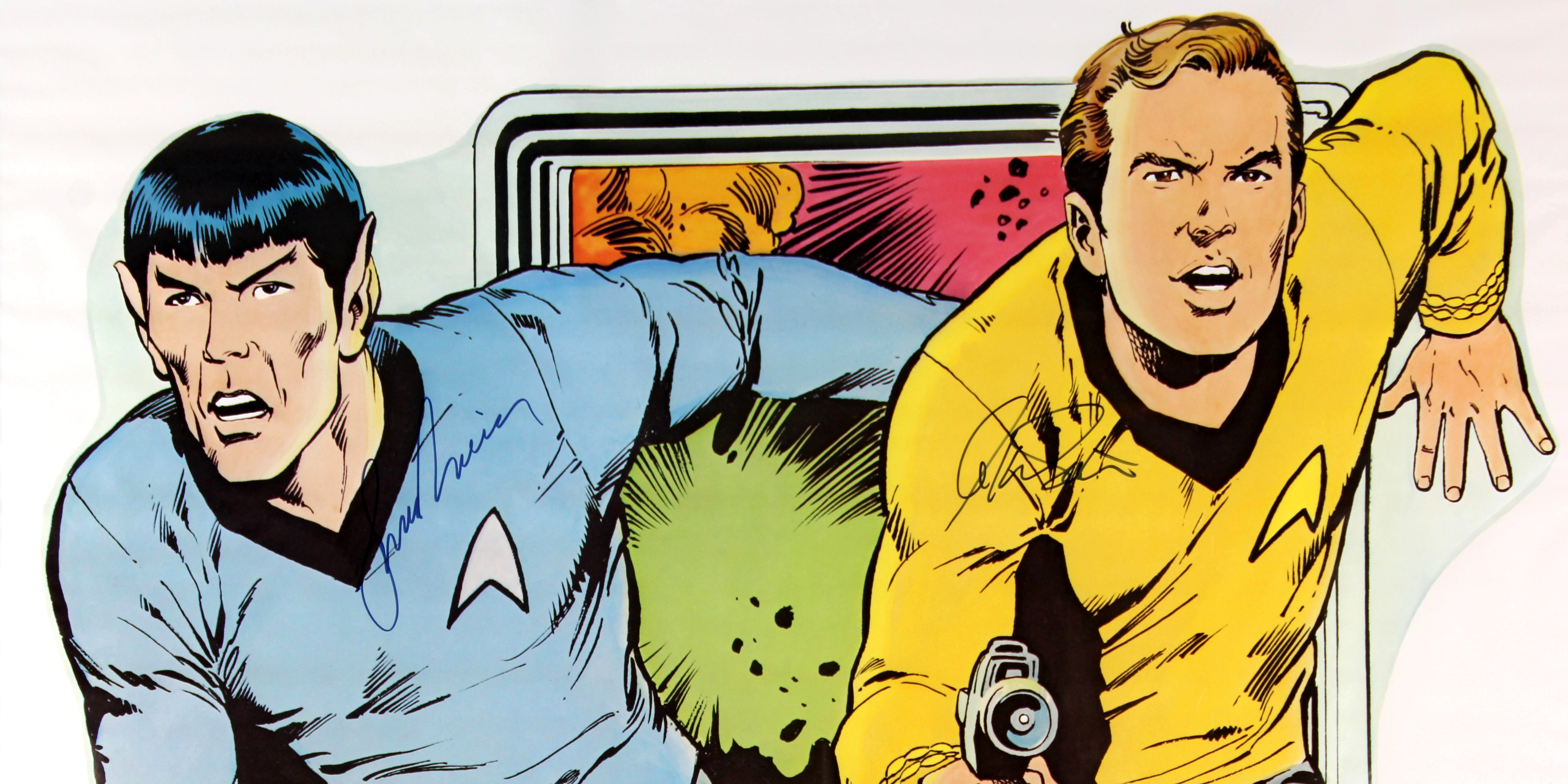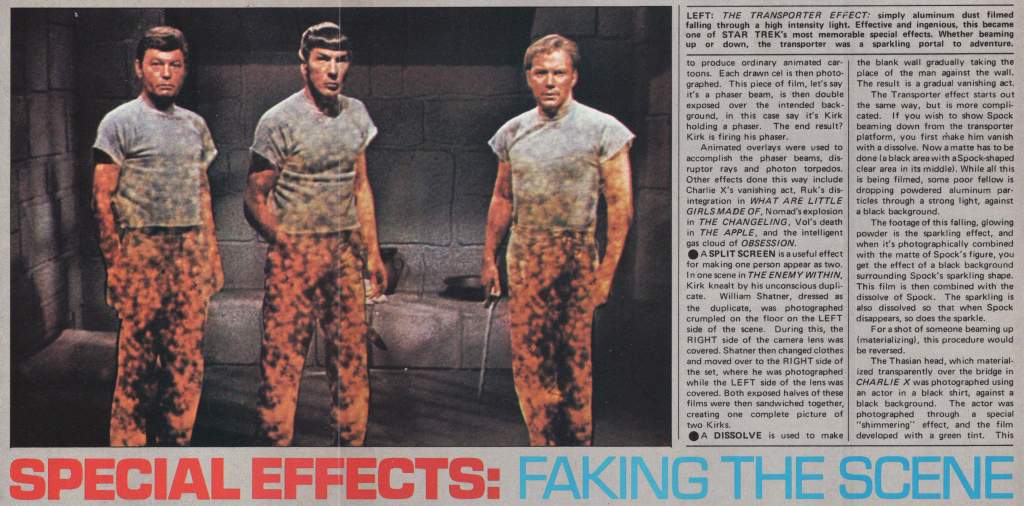Star Trek would not exist today without the fandom of the 1970s. We would not have 10 follow-on shows and 13 movies and countless books and tons of merch had the original series faded away once the sets were torn down in 1969.
The fans kept it alive by watching reruns, attending conventions and buying any book or magazine with Star Trek on its cover. And the first professionally published Star Trek magazine is arguably also the best: the Star Trek Giant Poster Book.


















Many early Trek books and magazines began essentially by accident, and a surprising number of those came out of The Federation Trading Post, a Star Trek store that occupied what is now a high-end bit of real estate in Manhattan in the 1970s. The Star Fleet Medical Reference Manual and two of the best Gold Key Trek comics both originated in that store.
As did the Giant Poster Books. Star Trek production luminary Doug Drexler told me recently he was behind the counter one day in 1976 when a guy from Fiona Press came into the store. Fiona “had a skin magazine, and it was a slick publication.” That magazine was called Club, an American version of the British magazine Men Only.
“He said they had just gotten the rights to do a Star Trek poster book, but they knew nothing about Star Trek. He asked if we knew anyone who could do it, and we said ‘Well, there’s us.’ We had our own photos, we were plugged into the fan base, and Allan Asherman had all kinds of studio transparencies. We used those to make our posters.”
Store staffer Asherman would go on to a lengthy career at DC Comics and as a magazine and book writer; his Star Trek work includes The Star Trek Compendium, The Star Trek Interview Book and The Making of Star Trek II: The Wrath of Khan.
A fourth book, detailing unproduced scripts, was printed and two days away from distribution when Gene Roddenberry killed the project because a Hollywood writers’ strike stopped the flow of stories for the second season of The Next Generation, and he needed those older scripts. Asherman told that story on a recent episode of the Roy’s Tie-Dye Sci-Fi Corner podcast.
The team assembles
The magazine’s editorial staff in its early days all came from the store: Ron Barlow, Doug Drexler, Allan Asherman, Anthony Fredrickson and Geoffrey Mandel. And the quality of the writing and editing is excellent, especially when you consider these guys were not, at that time, creative professionals.


Ron Barlow (left) and Doug Drexler from All About Star Trek Fan Clubs, December 1976, and the masthead from issue 1 of the Poster Book.
“Geoff Mandel, Allan Asherman, Anthony Fredrickson and I wrote the articles and drew the pictures. There was a small group of fans who knew each other, and stuff would get passed around. Allan…had the most amazing collection of anyone I knew at the time, and the rest of us had been collecting images and interviews, so we had that stuff, plus we had the passion to write about it.”
The team turned out a high-quality issue almost every month. “I used to write down all my thoughts and then I would cut up [the pages] and put this one here and move that one there and then I would tape them together and I’d have an outline,” Drexler said.
The group would change a little over time, with Drexler drifting away after about a year and new people joining.
The publisher of the magazines is listed as Paradise Press, the same company as Fiona Press. I imagine the new name distanced the titles from their progenitor. And the model was obviously a success, as the company went on to produce poster books on Star Wars, Starsky and Hutch, The Black Hole, Close Encounters of the Third Kind, Grease, The Great Muppet Caper and many others.
Drexler, however, said even today he can’t assess the magazine’s financial performance. “They sold well enough but there was no way to gather reactions, so I don’t really know.”
Way ahead of their time
But he does know how important those magazines were. “I’ve seen photos from the production of Star Trek: The Motion Picture with Fred Phillips putting make-up on Leonard Nimoy and with our posters on the wall.”
The team spent hours drawing blueprints and analysing scripts and scenes, and “now there are thousands of people doing that but, back then, we were it. That’s why so many people remember our books. They left an impression.
“The Poster Books were way ahead of their time. They were the first professional Star Trek magazines, and they were done by people who knew and loved the show.”
I’ll cover each issue of the magazine. Here is the article on issue one.


8 responses to “Creating the Star Trek Giant Poster Books”
I’m so stoked you did a post on these. I just completed getting my full set. Some really great info here.
LikeLike
Thank you for reading. And congratulations on completing your set!
LikeLike
Good article, thanks. I didn’t know the folks at The Federation Trading Post had a connection with the Giant Poster Books. I still have a few of the mail order catalogs from the Post in Berkeley, CA (if memory serves), the earliest dated in 1975.
LikeLike
To clarify why Roddenberry blocked the publication of the Phase II book – this was happening in 1988, during the WGA strike of that year. TNG was going into it’s second season and needed scripts badly. They managed to turn two Phase II scripts, “The Child” & “Devil’s Due,” into TNG episodes. The strike ended in time to not impact production as much, but Season 2 of TNG was the shortest season of all.
LikeLike
Tom, thank you! I hope you see this reply. You are correct, and I have revised the article. The timing was unclear to me in that podcast interview and I made the wrong conclusion.
I really tried to get in touch with Asherman over a number of months. I would have loved to talk to him for this piece.
LikeLike
[…] Star Trek would not exist today without the fandom of the 1970s. We would not have 10 new shows and … […]
LikeLike
I always wondered why they stopped making them. I recall I started to receive Star Wars poster books in place of the Trek I expected. I was really disappointed and cancelled my subscription. Those were great days to be a fan.
LikeLike
Hi Daniel. Thanks for reading.
I don’t know why they stopped. Doug wasn’t sure either; by the end, he had drifted away to other projects. I tried over many months to get in touch with Allan Asherman, but I never got a chance to ask him. I suspect it was a mostly that some people left the project and the remaining people simply ran out of enthusiasm.
LikeLike